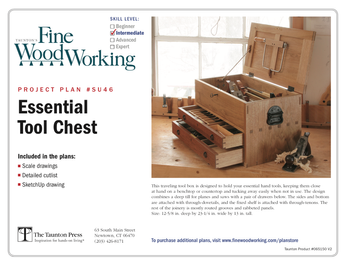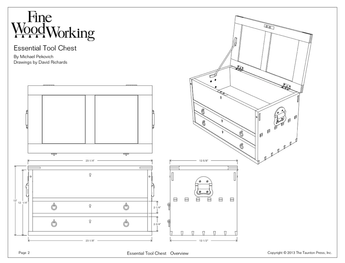Seem to remember a device, either a voltage regulator or an amperage reg. that allowed one to convert a single speed router to a variable speed model w/o loss of power to the motor. Just can’t remember (or find) the device. I’m just interested in its’ specs, wondering if I could use it on my Shop Fox Mortiser. I’d kinda like to play with various speeds in different types of lumber. Any help would be appreciated.
Discussion Forum
Get It All!
UNLIMITED Membership is like taking a master class in woodworking for less than $10 a month.
Start Your Free TrialCategories
Discussion Forum
Digital Plans Library
Member exclusive! – Plans for everyone – from beginners to experts – right at your fingertips.
Highlights
-
Shape Your Skills
when you sign up for our emails
This site is protected by reCAPTCHA and the Google Privacy Policy and Terms of Service apply. -
 Shop Talk Live Podcast
Shop Talk Live Podcast -
 Our favorite articles and videos
Our favorite articles and videos -
E-Learning Courses from Fine Woodworking
-
-
 Fine Woodworking New England Event
Fine Woodworking New England Event -












Replies
Your mortiser almost certainly has an induction motor which can't be hooked up to a speed control unit. The speed controls only work with universal motors, which have brushes to carry power to the rotating armature and are generally only used on hand held power tools.
John W.
>Your mortiser almost certainly has an induction motor which >can't be hooked up to a speed control unit
John, don't tell that to all the people who make induction motor speed controllers.
Try a Google search using "induction motor speed control". They might be a bitexpensive, but I have had them on industrial equipment since the 70's, and lots of lathes and such come with them now.
Michael R.
You can put a speed control on induction motors but only if the motor itself is a three phase unit. The input power to the control box can be single phase, but the output to the motor will be an imitation three phase created by the circuitry in the controller.
I'm presuming that Shop fox doesn't equip their their home shop mortiser with a three phase motor.
John W.
You can put a speed control on induction motors but only if the motor itself is a three phase unit.
That was true 30 years ago, but not since solid state frequency controllers became available .
The speed of any given induction motor is largely determined by frequency. If you can change the frequency, you can change the speed.
Note the large number of better wood lathes on the market with single phase variable speed drives. These have been on the market for a number of years, now. and have been available for industrial applications for a long time. They are appearing on consumer goods because the cost is now low enough to make it feasible.
Here is a link to one of many manufacturers: http://www.anaconsystems.com/text/singleov.html
Michael R.
I'm familiar with the system you are talking about, they won't work with the capacitor start motors that are used on Taiwanese machines.
See this page on their site: http://www.anaconsystems.com/text/productsingle.html
The typical motor on mortisers is the switched capacitor type which they say won't work with their controls.
A number of the variable speed drives that I have heard about are using three phase motors controlled by inverters with a single phase input.
John W.
Edited 3/26/2004 4:27 pm ET by JohnW
I doubt if what you're describing is possible. The router is a universal motor, which to control the speed, you regulate the voltage. You will reduce the power of your router. As far as I know, there is no way to electrically adjust the speed of a universal motor without affecting its power.
If the motor is an induction type, than I think adjusting the speed requires you to go to 3 phase power, then to some other contraption (if I remember correctly). Basically, you would need to change the frequency of voltage to change the speed.
The universal motor speed controls can reduce the speed without drastically reducing the power because they create a full power pulse that generates nearly full torque. The pulsing will reduce the speed but doesn't drastically affect the torque until the rpm's get fairly low.
John W.
This forum post is now archived. Commenting has been disabled